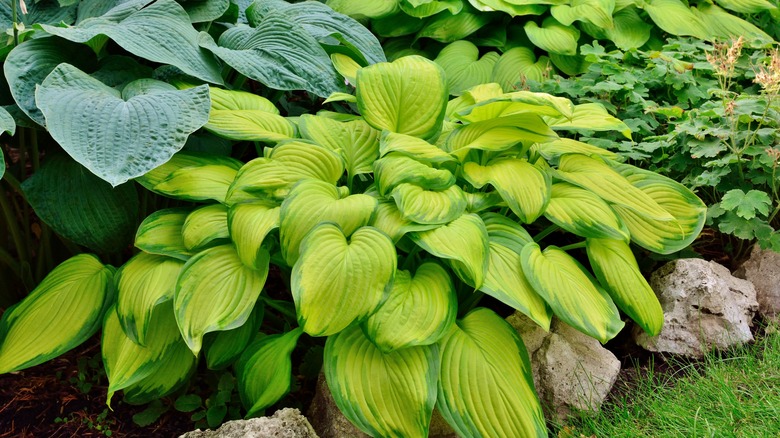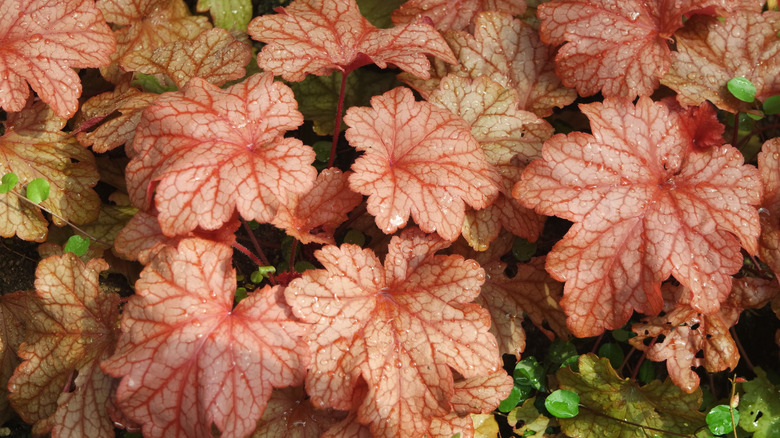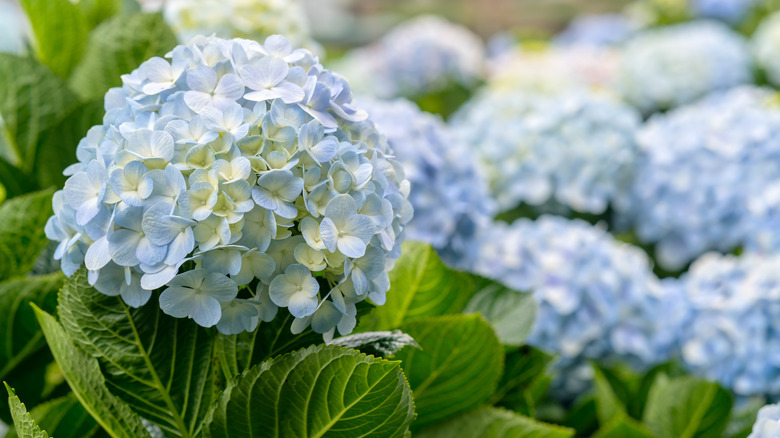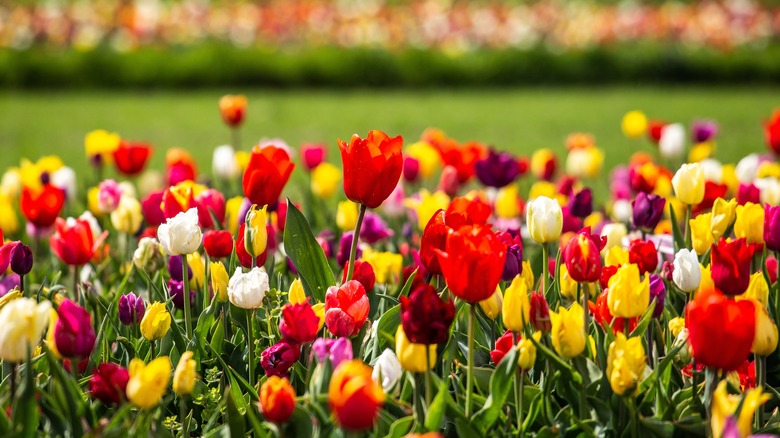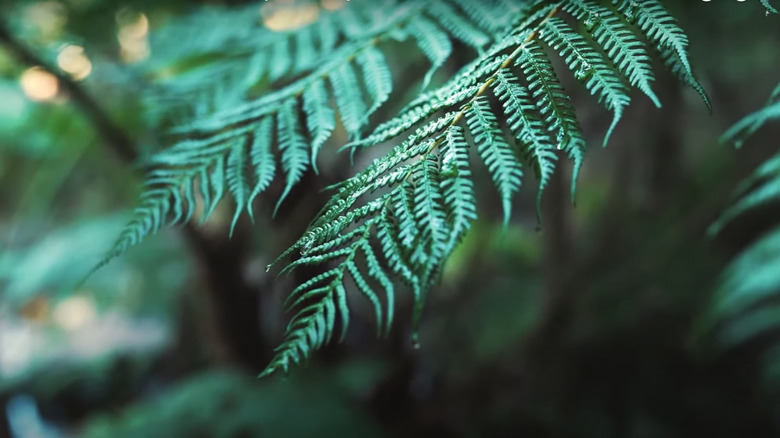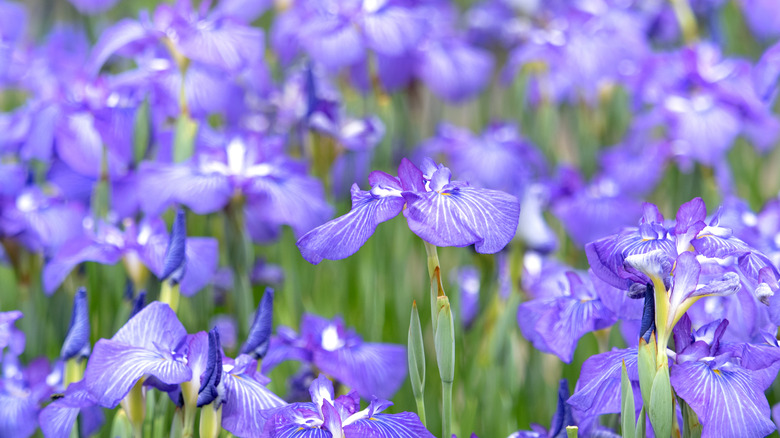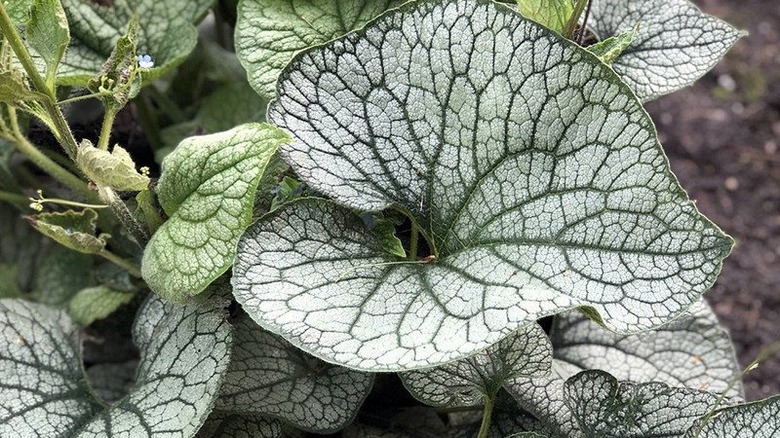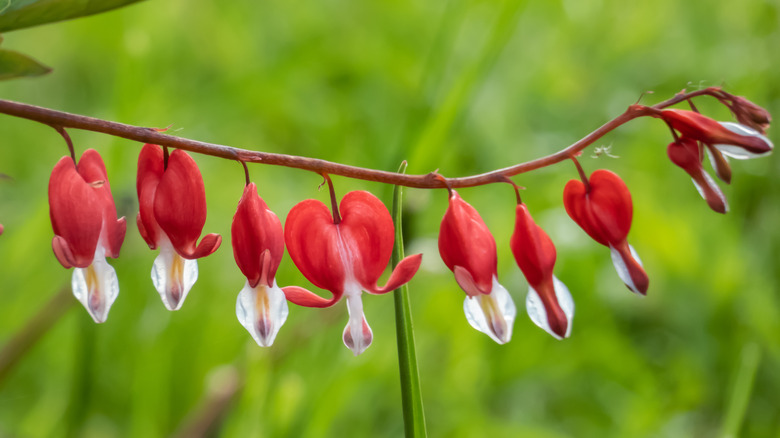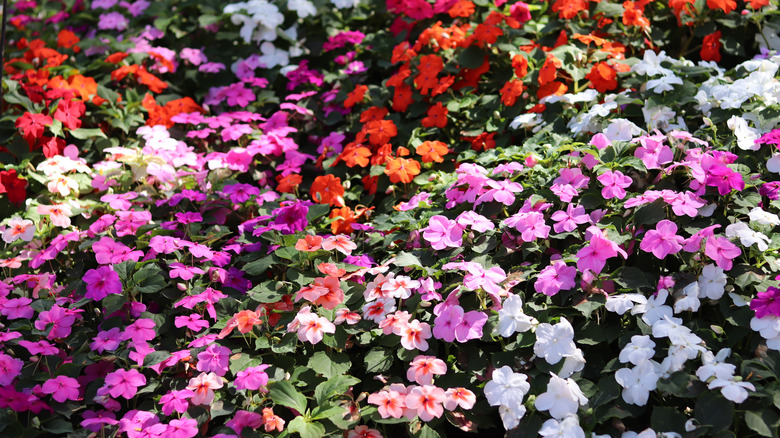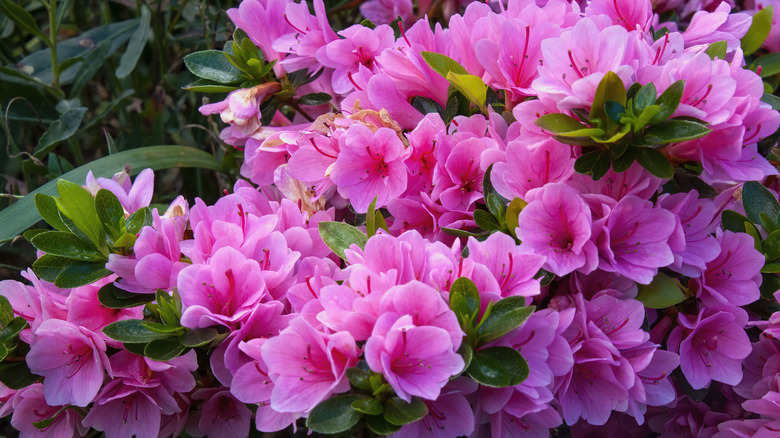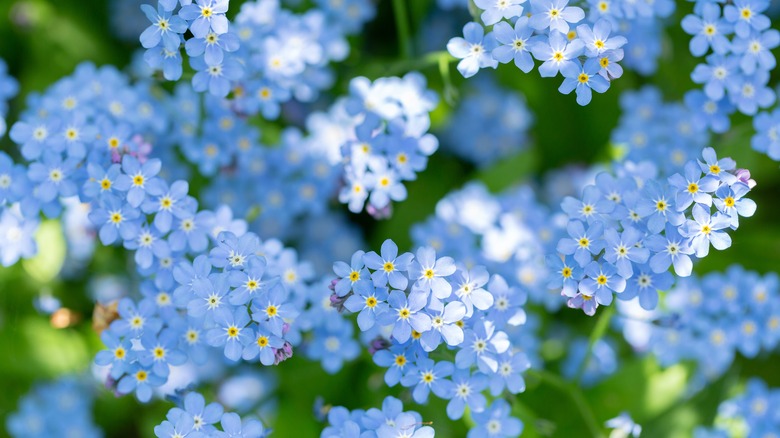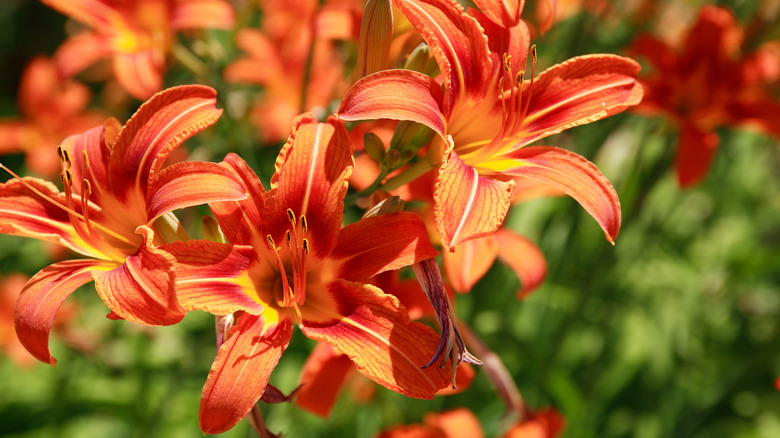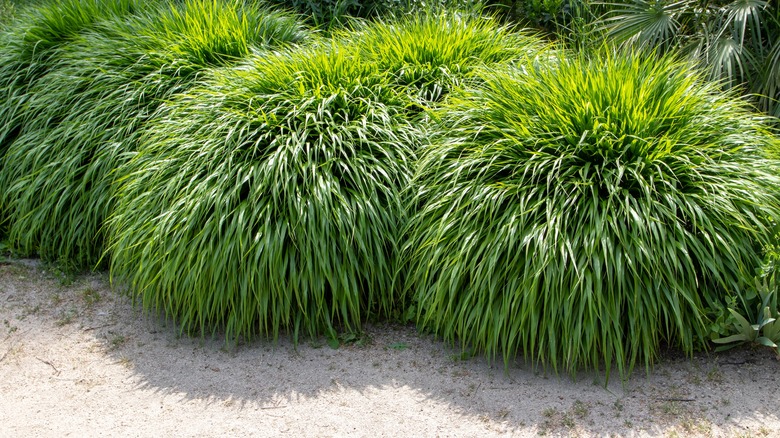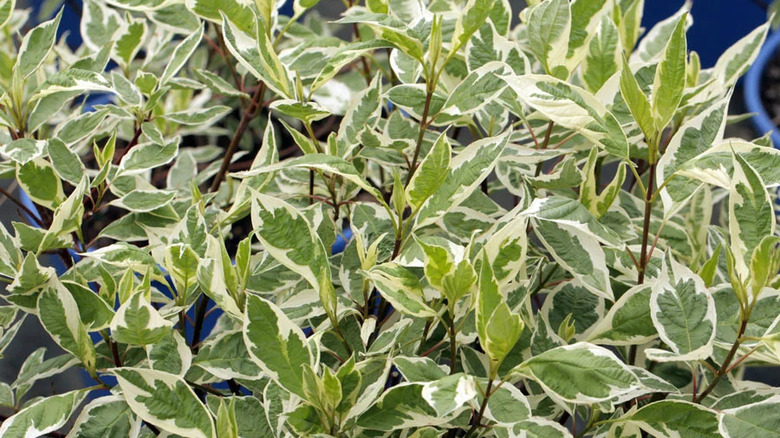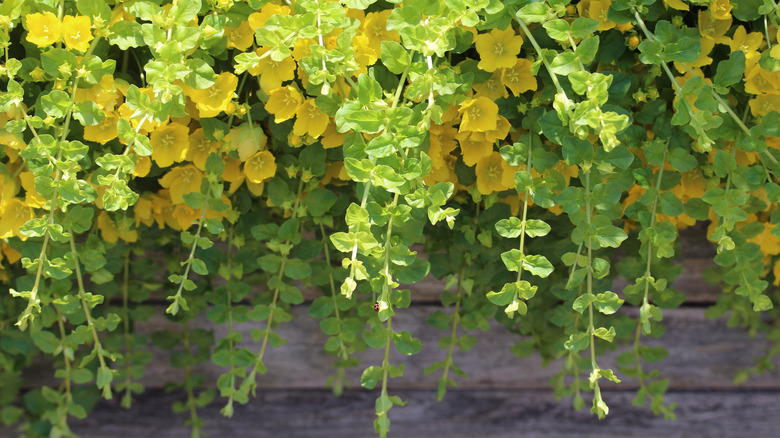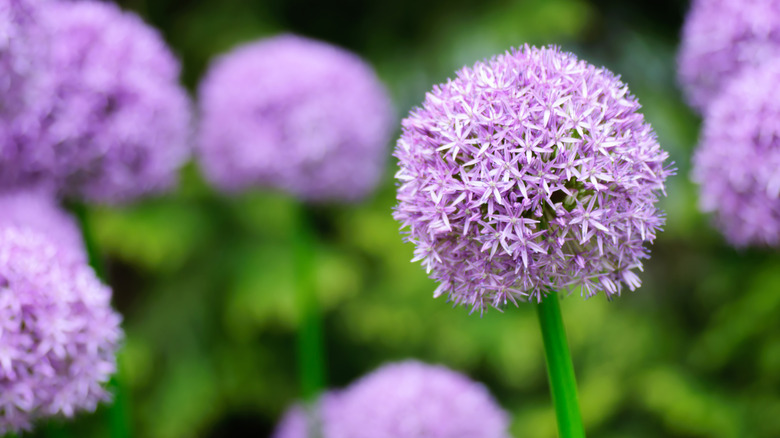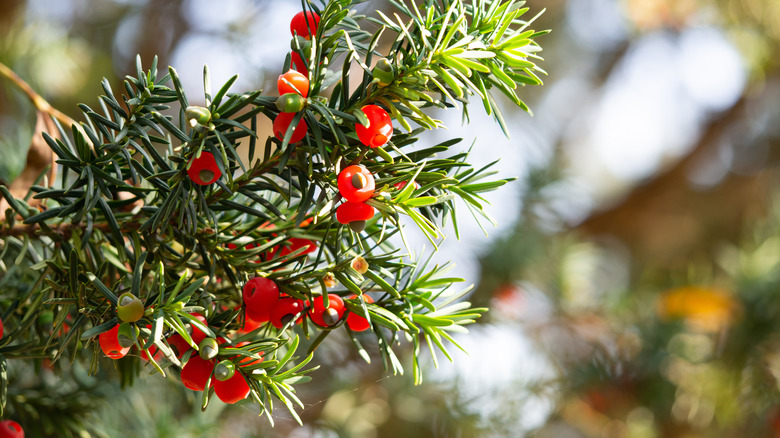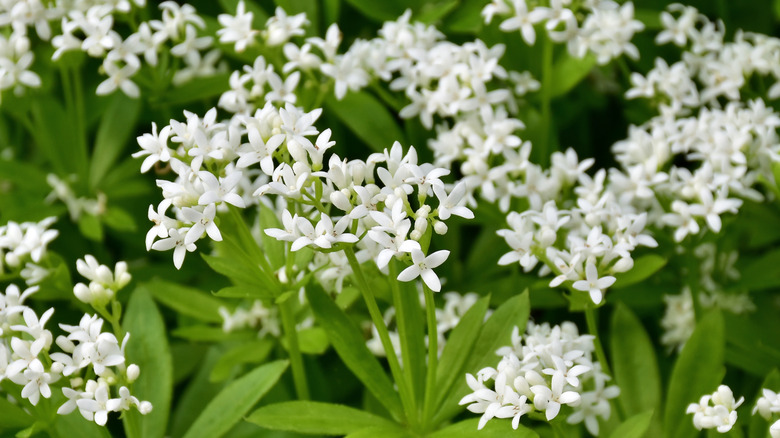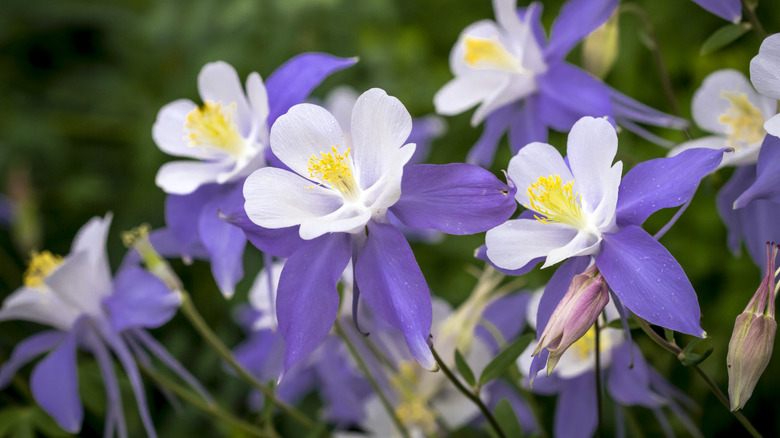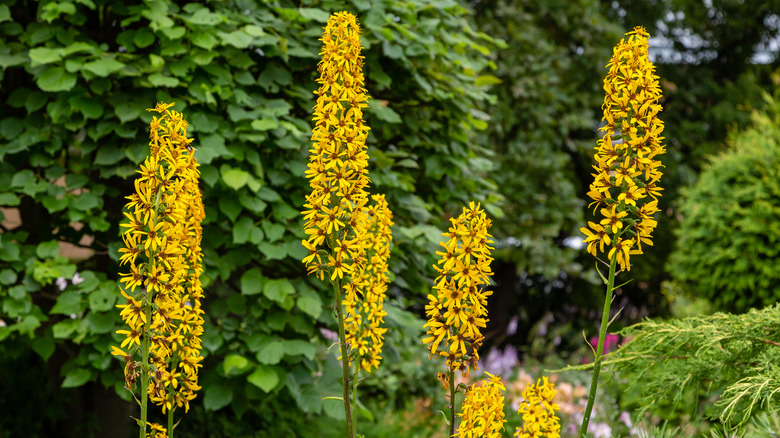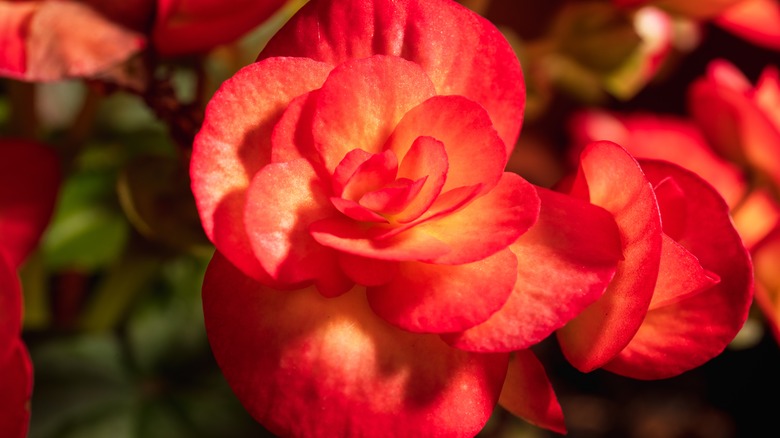Companion Plants That Are A Hosta's Best Friend
Hostas are a favorite for home gardeners for many reasons, including their hardiness, forgiving care requirements, and stunning foliage. Every year they get bigger and give our yards a fuller and more luscious appearance, but they look even better alongside companion plants. But what are companion plants, and what is their purpose? Typically, gardeners will place two plants near each in hopes that one will benefit the other or for mutual benefit. For example, some people choose to plant tomatoes and basil near each other because of the basil's ability to deter insects that are known to harm tomatoes.
And when it comes to hostas, you can choose from over 20 companion plants, such as the Montgomery Japanese astilbe (Astilbe japonica 'Montgomery'), a deer- and rabbit-resistant plant that can beautifully contrast bright green hosta leaves. It's also a hardy plant that can sit reliably beside hostas in zones 3 through 9. However, so many more options are available to meet your gardening needs, and we've listed all the information you'll need below.
1. Coral bells
Coral bells (Heuchera) are great companion plants for hostas because they enjoy the same type of environment, maintenance requirements, and limited sun exposure. They're also an excellent option for anyone wanting to create texture and an exciting color scheme since they are available in shades of purple and red.
2. Hydrangeas
Hydrangeas (Hydrangea) and hostas have always been a stunning pair. The mixture of color and luscious greenery can transform any garden into a magical space to relax and enjoy the outdoors. They work so well together because they're both suitable for most regions in the U.S., and they both prefer acidic soil.
3. Tulips
Tulips (Tulipa) and hostas benefit each other due to their life cycles. During spring, the tulips will act as a shade for hostas. Then, when it's time for the tulips to go dormant, the hosta's broad leaves will cover the leaves of the tulips. This type of flower is also low maintenance, making this combination perfect for beginner gardeners.
4. Fern
Ferns (Polypodiopsida) are beautiful plants available at different heights with lace-like leaves. They're an excellent option for those who want to complement their hostas with some texture, and both plants thrive in shady and moist areas.
5. Japanese iris
The Japanese iris (Iris ensata) will bloom in late spring or the beginning of summer and produce stunning purple flowers. Similarly to hostas, they thrive in shady and sunny areas and can be planted in the same type of soil. This means they can be interplanted so that their stunning foliage is mixed together to create a beautiful display.
6. Brunnera
If you're a fan of combining leafy plants, we suggest pairing brunnera (Brunnera macrophylla) with hostas. Brunnera produces charming, heart-shaped leaves and tiny blue flowers in the spring, which contrasts nicely against the hosta's foliage. It's also an excellent option for those who need a ground cover plant, which can provide additional protection from the sun for your hosta.
7. Bleeding hearts
Just as the name implies, bleeding hearts (Lamprocapnos spectabilis) are uniquely-shaped flowers that look like ... bleeding hearts! They're eye-catching and can be used to introduce a pop of color when planted near hostas. They also thrive in the same type of conditions, such as moist soil and partial shade, and are perfect for planting in zones 2 through 9.
8. Impatiens
Impatiens (Impatiens spp.) are available in a rainbow of colors, such as pink, white, purple, and yellow. This type of flower benefits from being planted near hostas because once they go dormant, the hosta's leaves will cover receding foliage.
9. Azalea
Azaleas (Rhododendron spp.) are another vibrant choice as a companion plant for your hostas. This shrub doesn't get very large, so it works well in small gardens. Additionally, this plant prefers partial shade and well-drained soil and will provide a touch of color to your outdoor space when your hostas are dormant.
10. Forget-me-nots
Forget-me-nots (Myosotis sylvatic) are adorable flowers with minimal maintenance requirements that prefer partial shade. Additionally, their light blue hue can complement the green leaves of your hostas while attracting pollinators, such as bees and butterflies.
11. Daylily
The daylily (Hemerocallis) is a trumpet-shaped flower available in various vibrant patterns and colors. They can grow about 1 to 6 feet tall, and if you decide to plant them with your hostas, they'll need to be placed in an area where they'll receive four to six hours of direct sunlight in the morning.
12. Japanese hakone grass
Not many ornamental grasses like sitting in the shade. However, Japanese Hakone grass (Hakonechloa) does, making it a great companion plant for your hostas. Its relatively sharp blades deter most deer and rabbits, and it can be combined with hostas to create a lovely border for your garden.
13. Dogwood
Dogwood (Cornus) looks stunning all year round. In the spring, you can expect to see either white or pink flowers, while the appearance of the foliage can differ in shape and color. This plant can be used to contrast your hostas and to build up a foundation for your garden.
14. Creeping Jenny
Since hostas prefer moist soil, creeping Jenny (Lysimachia) plants, which are herbaceous perennials, can be used as living mulch to help your soil retain its moisture. However, they grow rapidly, so routine trimmings will likely be in order.
15. Allium
Alliums (Allium) bloom in the spring, showcasing cheerful, purple orbs. However, at the same time, the bottom of the plant starts to turn yellow. So, pairing them with hostas can help hide their less desirable quality while keeping your garden looking fresh.
16. English yew
Do you live in a very windy area that's affecting your hostas? English yews (Taxus baccata) may be your solution. They're able to grow 4 feet high, and their needle-like foliage is perfect for providing a bit of protection that can prevent your hostas from getting hit by a burst of chilly air.
17. Sweet woodruff
Sweet woodruff (Galium odorata) is a ground cover plant that blooms mid-spring around the same time the hosta's leaves begin to form, providing gardeners with a full and luscious landscape with contrasting foliage.
18. Cyclamen
We can't witness the beauty of hostas all year, so choosing a companion plant that can give your garden a colorful touch while your hosta is dormant is important. For example, cyclamens (Cyclamen) bloom in the fall and winter, exhibiting hues of pink and purple while your hosta sits in the background and waits for its time to shine in the spring.
19. Columbine
If you're having trouble attracting pollinators to your hostas, we suggest planting a few columbines (Aquilegia spp.). This flower provides enough nectar to attract bees while also adding a soft, cool hue to your garden.
20. Leopard plant
Since hostas are short plants, pairing them with leopard plants (Ligularia) can help add a dimension of height to your garden. They typically grow anywhere between 2 to 4 feet tall, and their small yellow flowers are sure to add a feeling of brightness.
21. Begonia
The color of hosta leaves is typically a cool-toned green. To add a bit of warmth to your outdoor space, try planting some begonias (Begonia), which are available in a variety of warm, vibrant colors. They're also deer- and rabbit-resistant and grow admirably in zones 9 through 11.
